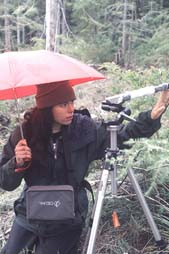
Abstract
Old-growth ponderosa pine (Pinus ponderosa) forests, formerly widespread across much of the western United States, are of critical conservation concern. Over 85% of pre-settlement stands have been logged, and those remaining have been compromised by fire suppression and grazing, increasing their susceptibility to damage from insects, pathogens, and stand-replacing fires. Forest managers are increasingly using prescribed fire to restore historic stand structures and fire regimes; federal agencies alone have been burning nearly 600,000 ha per year, at an annual cost of over 51 million dollars. Although the efficacy of prescribed fire for reducing fuels has been documented, little attention has been devoted to potential risks associated with its application, despite evidence that large ponderosa pines may experience up to 40% mortality in treated stands. Adequate evaluation of the effects of prescribed fire on pine mortality and vigor has been hampered by the local and largely descriptive nature of previous studies, as well as inadequate synthesis of research findings. The proposed research would explore the consequences of prescribed fire for old-growth ponderosa pine through two studies: a comparison of mortality and vigor among 60 widely distributed stands with different burn histories (spring-burned, fall-burned, and unburned) in the inland Northwest, and a meta-analysis of experimental results from multiple independent investigations. This information is urgently needed for successful restoration of degraded old-growth ponderosa pine stands in the western United States and will be directly applicable to restoration strategies being developed by The Nature Conservancy’s (TNC) Global Fire Initiative. To facilitate rapid transfer of findings, a workshop and field trip will be held for local natural resource managers, and results will be presented at regional TNC Fire Learning Network workshops. USDA Forest Service Okanogan and Wenatchee National Forests are collaborators on this project.
